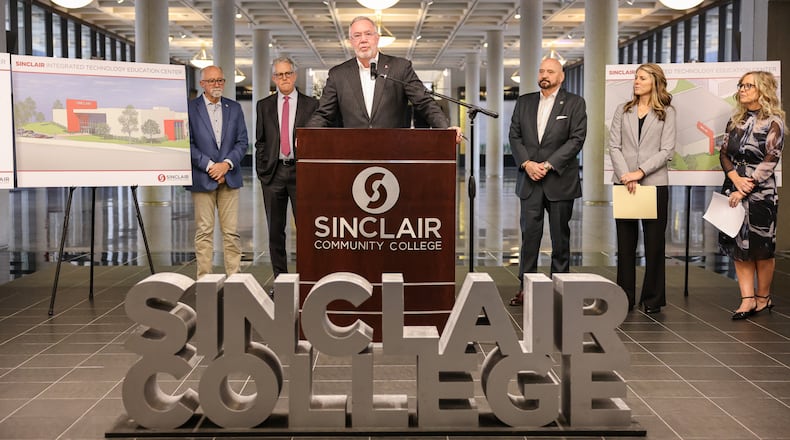Credit: Bryant Billing
Credit: Bryant Billing
More than 7,500 students are expected to use the building in the future, according to the college.
The expansion is expected to be completed by spring 2027. The college says it will be a “regional hub for technology innovation.”
Rena Sebor, Sinclair’s senior vice president and provost, said the space will be shared by a variety of programs.
“It is not dedicated to one specific program, but a philosophy of integrating technology across all programs,” she said, noting there are over 300 programs at Sinclair. Sinclair president Steve Johnson said the $30 million is coming from money that Sinclair has already put aside and earmarked. The college does not operate on debt, he said.
The college will work with donors to make up the $30 million price tag, Johnson said.
Johnson noted that the college is also reusing an existing space that is being used by only a few hundred people a year.
“It’s very efficient and very effective, and very smart,” he said.
Sinclair trustees Rob Connelly, of Henny Penny, and Joe Sciabica, of the Dayton Workforce Coalition, both said it’s clear that the future workforce desperately needs to have skills with technology.
“Here’s what we contemplated: is technology in the future going to be a bigger part of our lives and work or is it going to be less?” Connelly said. “And what we all concluded it’s going to be a lot more.”
Credit: Bryant Billing
Credit: Bryant Billing
Sciabica said the college is working closely with employers on this project.
“What we’re hearing is very consistent: (employers) need graduates who are adaptable, confident with both physical tools and digital systems, and ready to contribute on day one,” Sciabica said.
The project is part of a long-term goal from Sciabica, former Air Force Research Laboratory executive director, and others at the Dayton Foundation, who set an ambitious goal of getting about 23,000 working-age people off the sidelines and back into the regional labor force by the year 2030. That number is not annual, but across the whole period.
“This initiative, as shared earlier, is more than facilities,” Sciabica said. “It’s about relevance, resilience and regional leadership.”
Credit: Bryant Billing
Credit: Bryant Billing
About the Author




